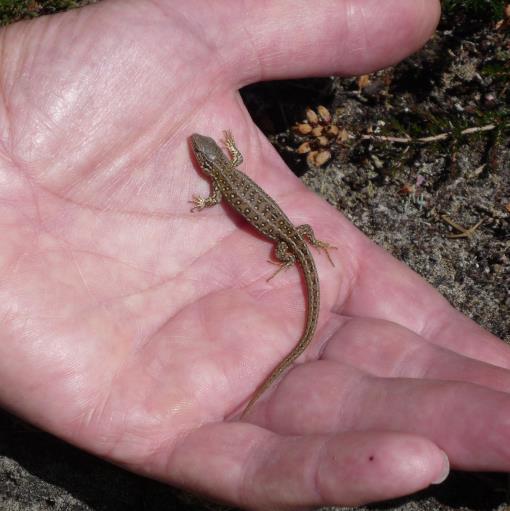
3 minute read
Species
Species Species
Sand lizard captive breeding and re-introductions By Nick Moulton - Reptile Conservation Officer
Advertisement
ARC has just reached two milestones this year: 50 years of sand lizard re-introductions and the release of over 10,000 animals!
Our early re-introductions with the British Herpetological Society Conservation Committee (BHSCC) were partly via captive breeding, but also through the rescue and direct translocation of animals from sites that were being developed. The lizards were taken to appropriate sites where the species had previously become extinct.
With more effective site protection and reduced site loss during the mid-1990’s, the Herpetological Conservation Trust/ARC adapted the programme to continue reintroductions solely via captive breeding.
Jonathan Webster, ARC Chair of Trustees said "We are delighted with the success of the sand lizard re-introduction programme. So far the partnerships, including agencies, NGOs and land-managers, have instigated 78 re-introductions to both dune and heathland sites in 12 vice-counties and restored the species to 7 of these. 80% of these have been successful or initially doing well and more are planned for the future."
A region with particularly high loss, estimated at 95% of the native populations, was the Wealden heaths. Our former Wealden Reserves Manager, Mike Preston, has been involved in the programme since the 1970s and continues the captive breeding and re-introductions to this region.

“When we started there were only 4 native sites left in the Wealden Heaths. We have now restored over 5,800 animals to 28 heathland sites. Our captive breeding vivariums are
outdoors and as natural as possible. When the eggs are laid they are removed and then incubated. When the animals hatch they are retained and fed for a few weeks and then released to the wild. The releases are generally undertaken in early September. For a reintroduction around 50-80 captive-bred juveniles are released each year for three consecutive years. On-going monitoring is essential to see how the animals are doing, and management, such as sand management, is often required to enhance their status” said Mike.
UK’s rarest amphibian given a head-start By Dr Karen Haysom - Species Programme Manager & Yvette Martin - Amphibian Conservation Officer
The pool frog (Pelophylax lessonae) is the UK’s rarest amphibian. Our UK native animals belong to the species’ northern clade, which has small populations in UK, Norway, Sweden, Finland and Estonia. Tragically, the original English population went extinct in 1995, partly because of agricultural management practices such as land drainage. Since 2005, ARC has been working with partners to bring the species back and help it flourish in its native East Anglia once again.

Two small populations of northern clade pool frogs now exist in the wild in the UK. The first reintroduction took place between 2005 and 2008, using wild-to-wild translocation of tadpoles and adults that were collected under special licence from Sweden. While still a small population, by 2015 there were enough animals for some to be translocated to a second site, Thompson Common. This Norfolk Wildlife Trust reserve is the last place where native pool frogs occurred before their extinction.
Due to low numbers, populations at both sites are vulnerable to climatic events or the introduction of a disease. To help secure the Thompson Common population, ARC fundraised to establish a “head-starting” facility, in which to hatch and rear wild-caught spawn and grow tadpoles, as these are the riskiest stages of the life-cycle,

Funding and in-kind support from Natural England, Forestry Commission, Anglian Water, London Zoo, Institute of Zoology, Amphibian Ark, Anglian Water Flourishing Environment Fund, British Herpetological Society amongst other generous donors enabled us to adapt and equip an operational building as a bio -secure facility in 2019. Two batches of tadpoles were released at Thompson Common this summer.











